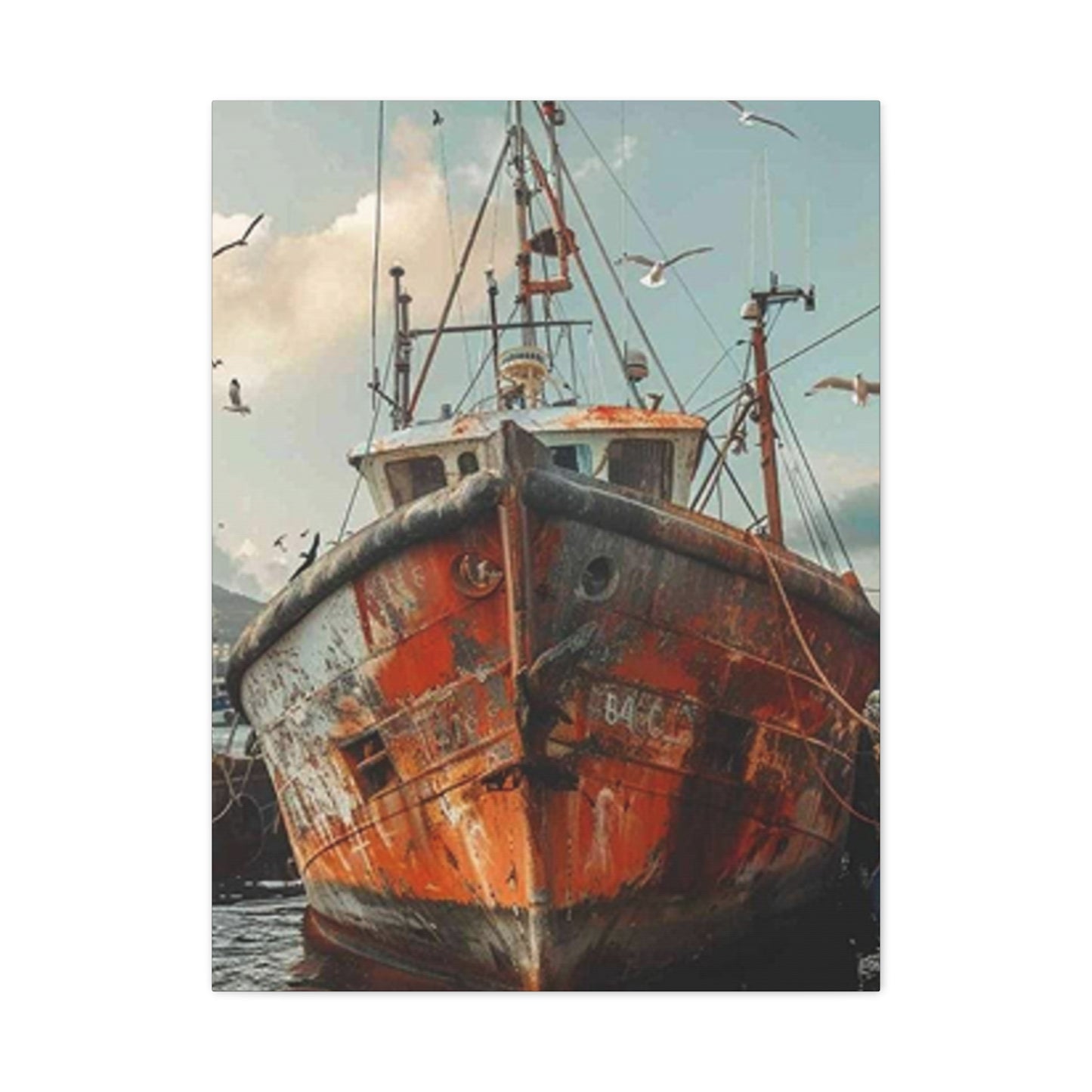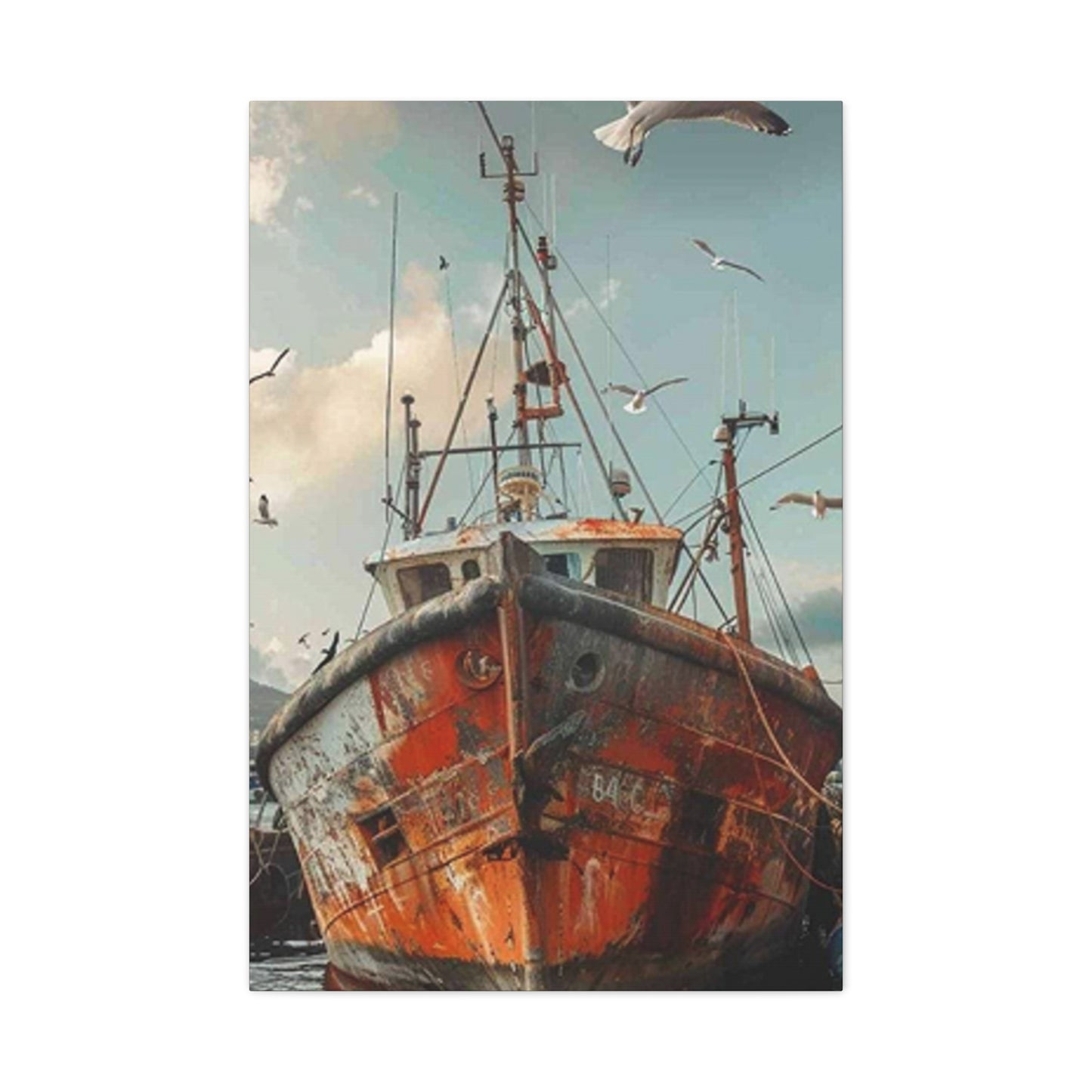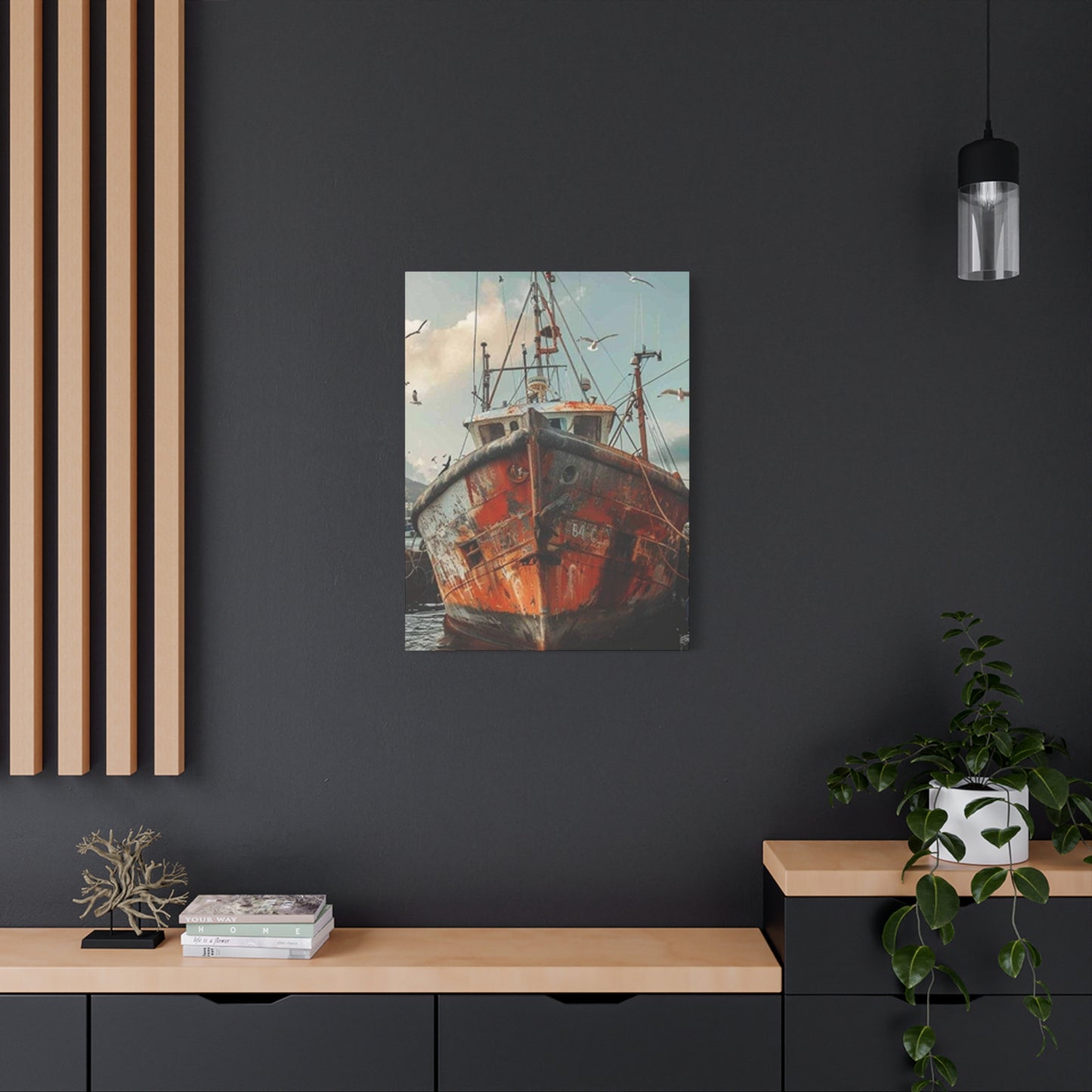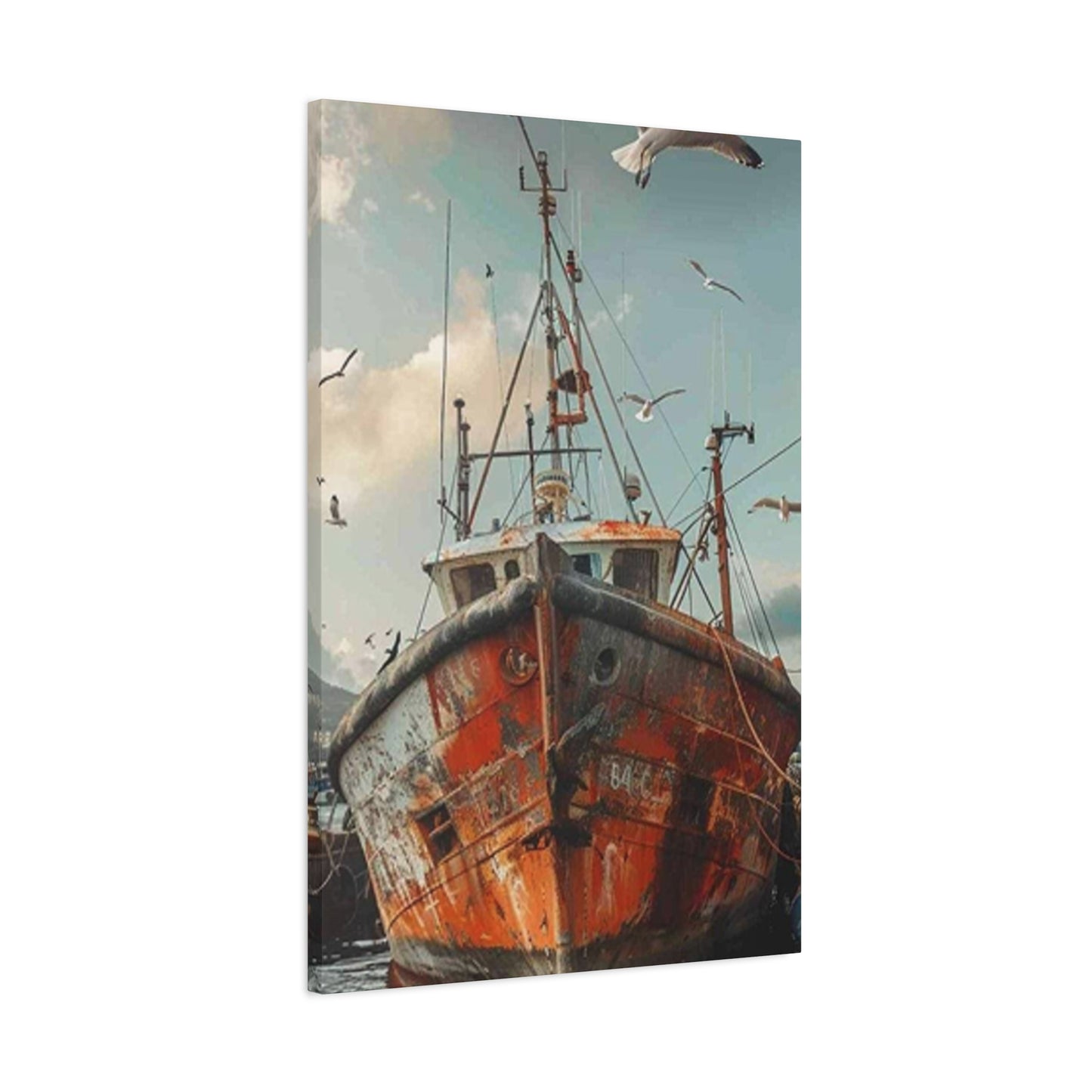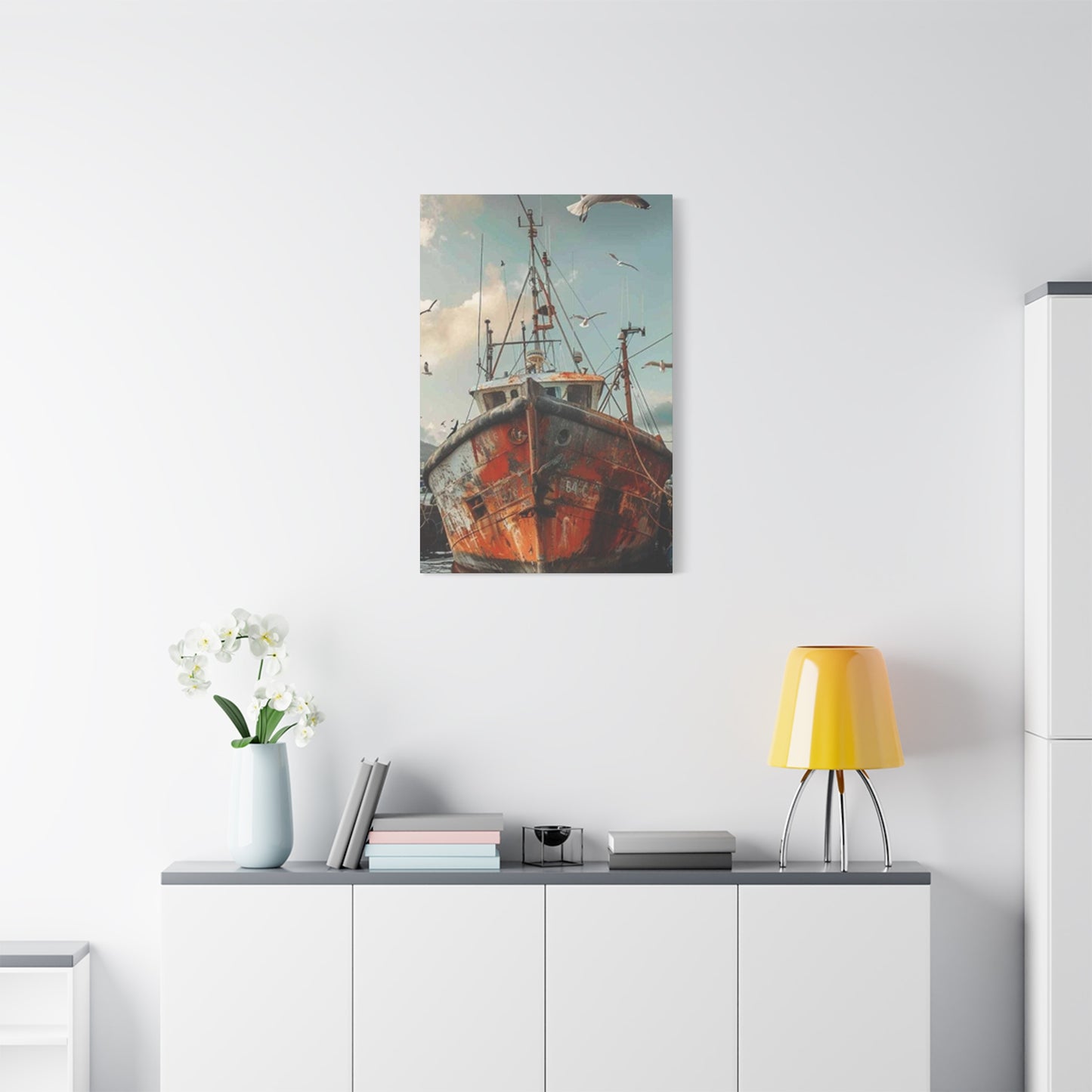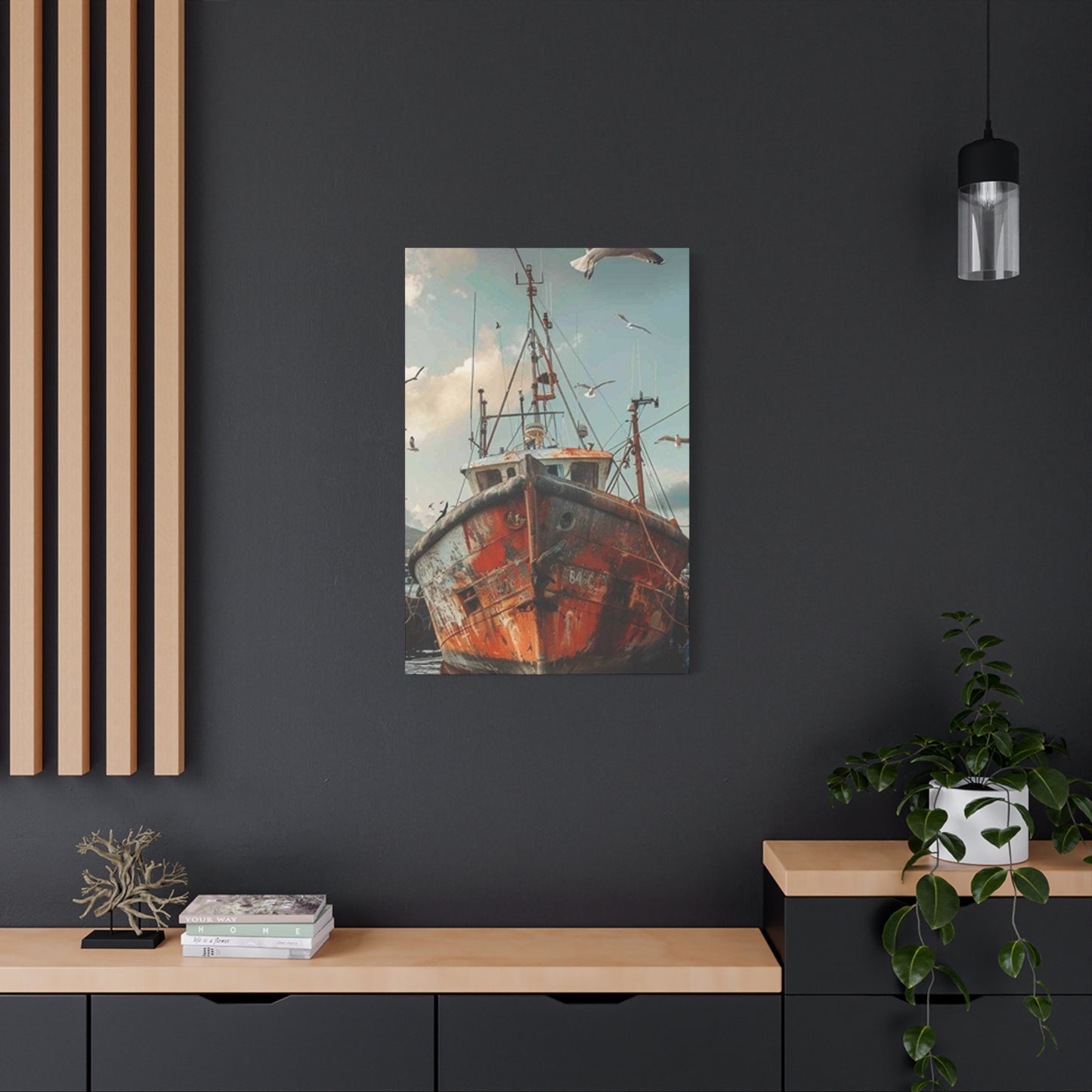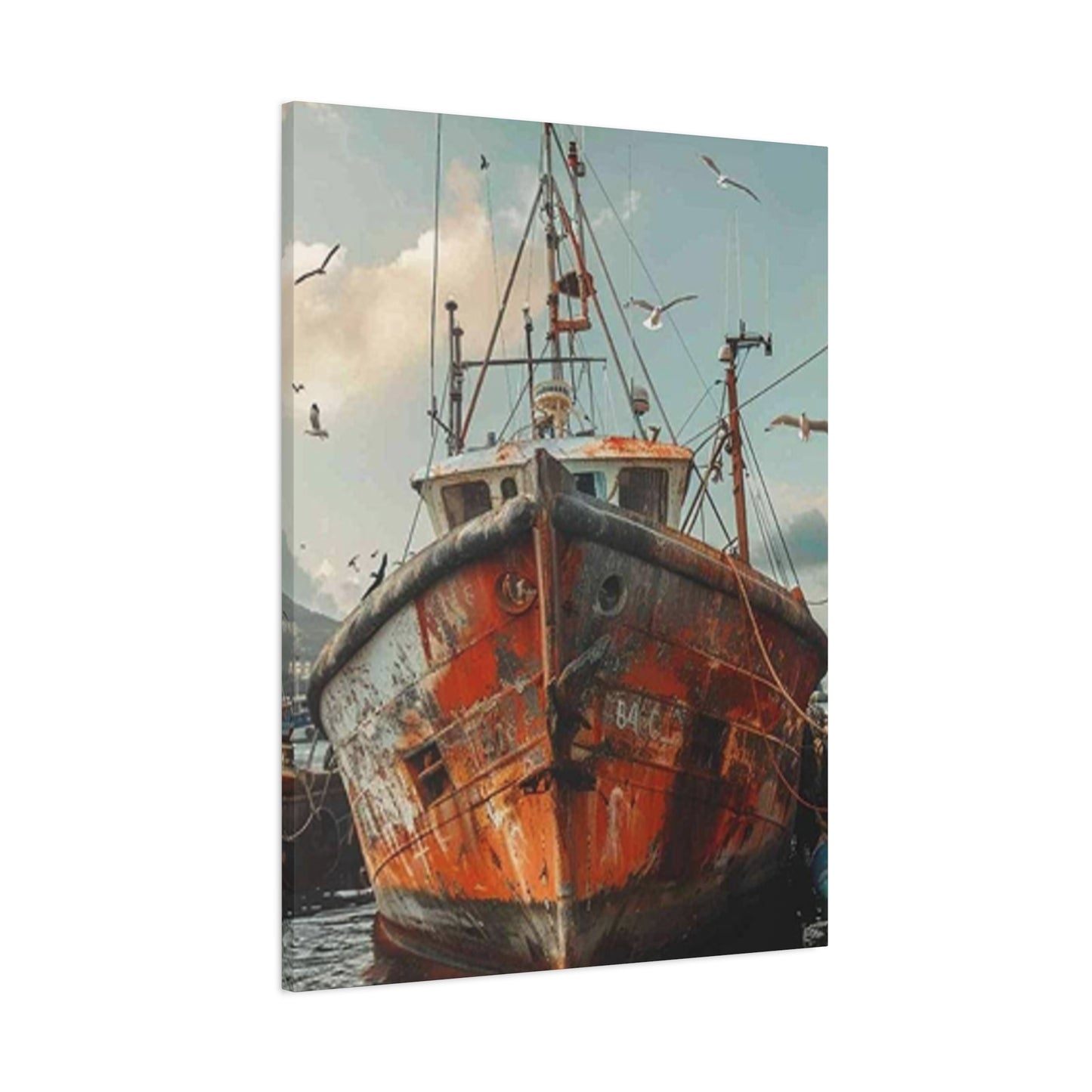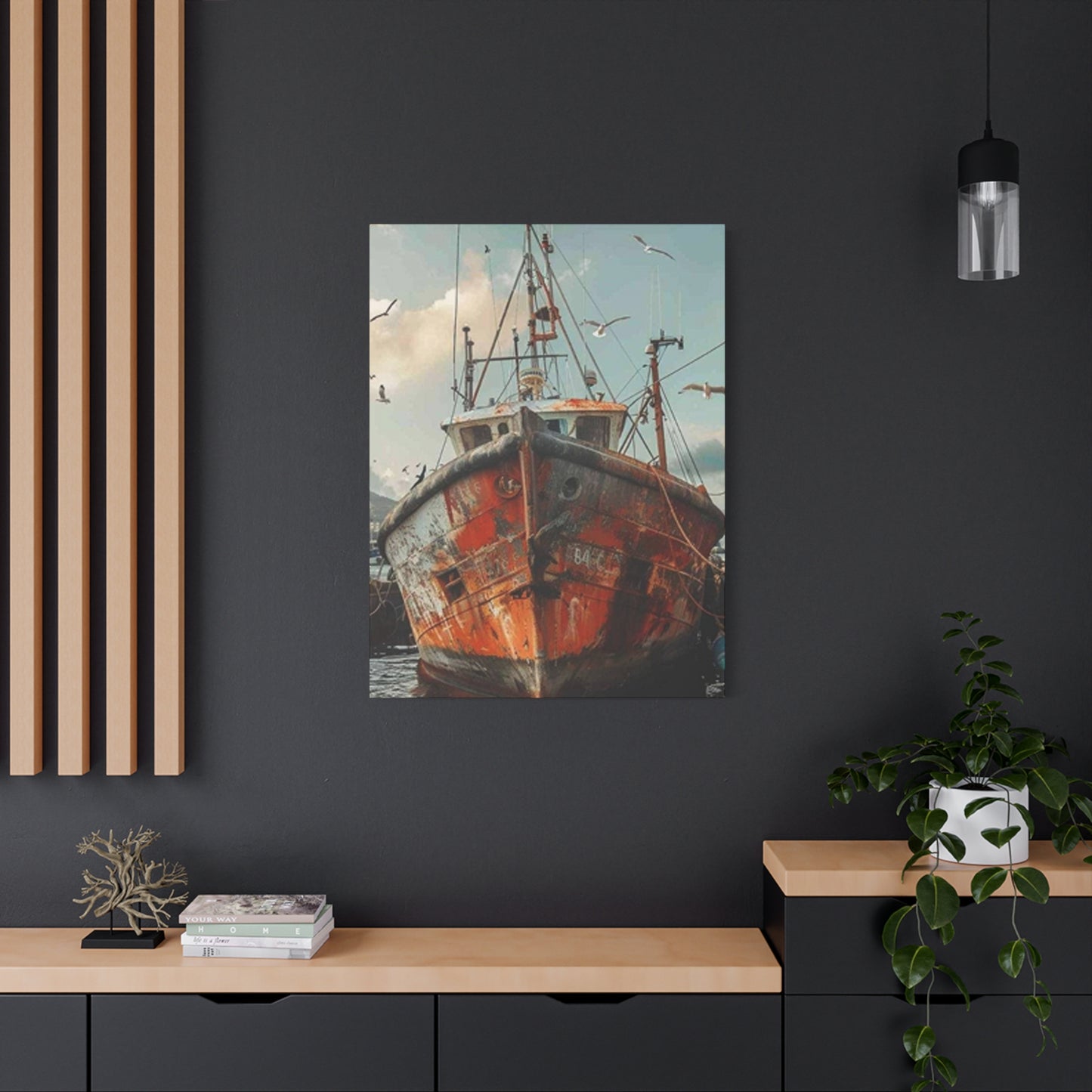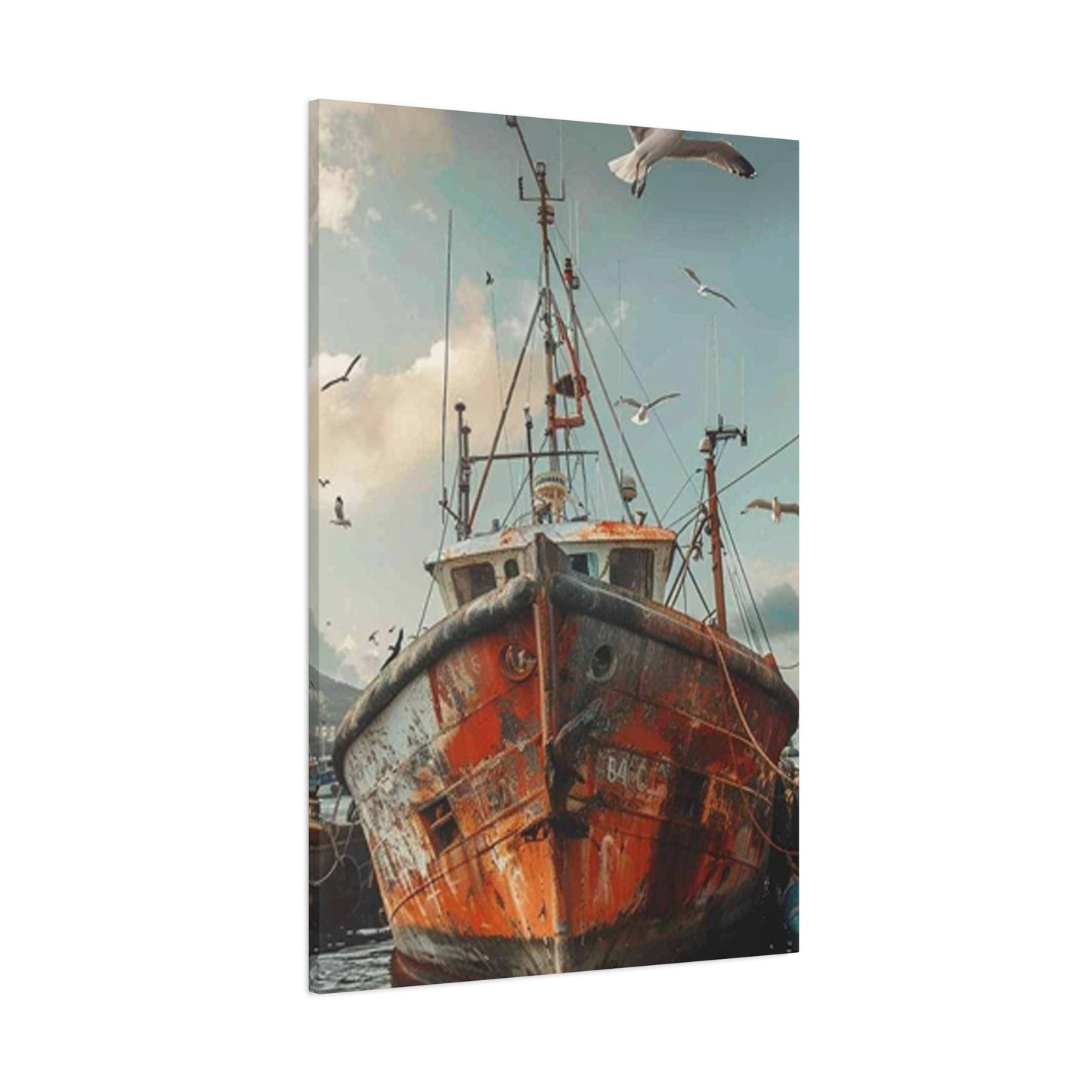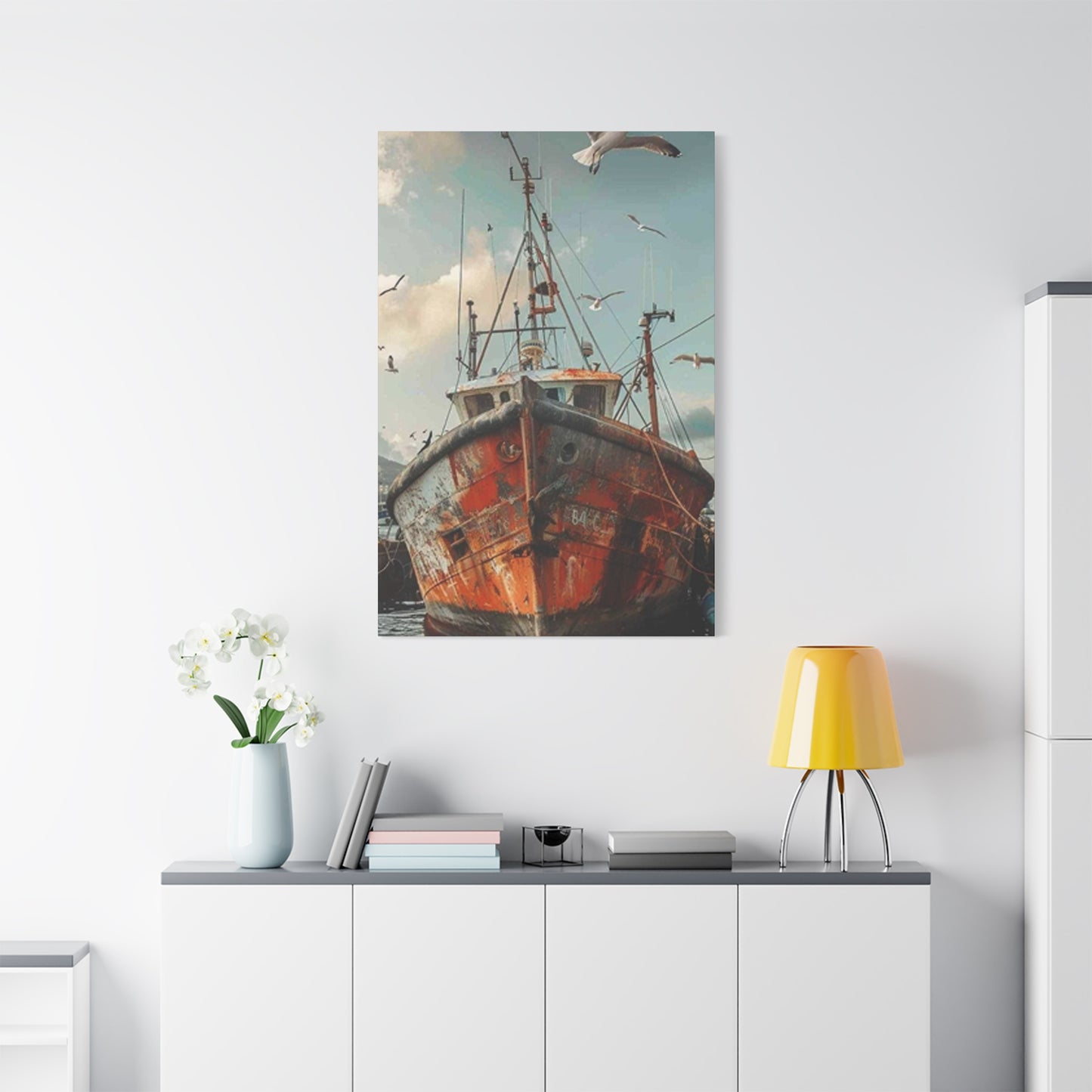Nautical Nostalgia: Abandoned Ship Wall Art Collection Guide
The captivating world of maritime artwork has experienced a remarkable renaissance in recent years, with abandoned ship wall art emerging as one of the most sought-after categories for art enthusiasts and collectors alike. These powerful visual narratives capture the haunting beauty of vessels that have been reclaimed by time and nature, offering viewers a profound connection to maritime history and the eternal struggle between human ambition and natural forces.
Abandoned ship wall art represents more than mere decoration; it embodies stories of adventure, loss, resilience, and the inevitable passage of time. Each piece serves as a window into forgotten chapters of maritime history, where once-proud vessels now rest in various states of decay, transformed by the elements into something entirely new and mysteriously beautiful. The genre encompasses everything from dramatic shipwrecks on rocky coastlines to peaceful vessels slowly being consumed by vegetation in forgotten harbors.
The emotional resonance of these artworks stems from their ability to evoke multiple interpretations and feelings simultaneously. Some viewers see melancholy in the deteriorating hulls, while others find hope in nature's ability to reclaim and transform human constructions. This duality makes abandoned ship wall art particularly compelling for those seeking artwork that provokes thought and conversation while maintaining aesthetic appeal.
Contemporary artists working in this medium draw inspiration from various sources, including historical maritime disasters, abandoned fishing fleets, and decommissioned naval vessels. The artistic interpretation ranges from photorealistic representations that document actual locations to impressionistic works that capture the emotional essence of maritime abandonment. Digital artists have also embraced this theme, creating stunning compositions that blend photography with artistic enhancement to produce pieces that are both contemporary and timeless.
The technical aspects of creating abandoned ship wall art require considerable skill and understanding of both maritime subjects and artistic principles. Artists must balance historical accuracy with creative interpretation, ensuring that their work respects the gravity of maritime history while remaining accessible to modern audiences. The challenge lies in capturing the texture of weathered wood, the patina of rusted metal, and the interplay between decaying structures and encroaching nature.
The Profound Beauty of Weathered Wood in Shipwreck Wall Art
Weathered wood stands as one of the most compelling elements in abandoned ship wall art, representing the intersection between craftsmanship and natural decay. The transformation of once-smooth planking into textured, sculptural surfaces tells a story that resonates deeply with viewers who appreciate the beauty found in imperfection and the passage of time. Artists who specialize in capturing these details understand that weathered wood is not merely a subject to be painted, but a narrative element that speaks to themes of resilience, vulnerability, and transformation.
The process of wood weathering on abandoned ships creates unique visual textures that cannot be replicated through artificial means. Salt spray, sun exposure, and constant moisture cycles work together to create patterns of cracking, splitting, and discoloration that are both random and aesthetically pleasing. These natural processes result in surfaces that catch and reflect light in ways that smooth wood simply cannot achieve, providing artists with rich source material for creating depth and interest in their compositions.
Color variations in weathered ship wood present endless possibilities for artistic interpretation. The spectrum ranges from deep charcoal grays in areas exposed to fire or extreme weather to warm honey tones in protected sections that have aged more gently. Silver-gray highlights appear where the surface has been worn smooth by wind and rain, while deeper crevices retain darker tones that create natural shadows and depth. These color variations provide artists with a natural palette that shifts subtly across the surface of the artwork.
The grain patterns revealed through weathering add another layer of visual interest to abandoned ship wall art. As softer wood fibers erode away, the harder grain lines become more pronounced, creating natural striations that follow the original growth patterns of the trees used in construction. These lines serve as compositional elements that can guide the viewer's eye through the artwork while adding authentic detail that speaks to the original craftsmanship of the vessel.
Artists working with weathered wood themes must develop techniques for accurately representing the complex interplay between texture, color, and form. Traditional oil painting techniques excel at capturing the subtle color variations and smooth transitions found in weathered wood, while acrylic approaches can effectively represent the sharper contrasts and more dramatic textures. Digital artists have the advantage of being able to layer multiple photographic references to create composite images that showcase the full range of weathered wood characteristics.
The emotional impact of weathered wood in abandoned ship wall art extends beyond its visual appeal to touch on deeper human experiences. Many viewers connect the gradual breakdown of wood to their own experiences with aging, change, and the acceptance of imperfection. This connection makes weathered wood imagery particularly powerful for those seeking artwork that resonates on both aesthetic and emotional levels.
Contemporary interpretations of weathered wood in ship art often incorporate mixed media techniques that add physical texture to the artwork surface. Some artists apply actual wood elements, sand, or other materials to create three-dimensional effects that enhance the tactile quality of their work. These techniques bridge the gap between painting and sculpture, creating pieces that engage multiple senses and invite closer examination.
The conservation implications of weathered wood also add layers of meaning to abandoned ship wall art. Many of the vessels depicted in these artworks are slowly disappearing as natural processes continue their work of decomposition. Artists who document these subjects are creating historical records as much as aesthetic statements, preserving the memory of structures that may not survive for future generations to witness.
The photographic documentation of weathered wood on abandoned ships has become an art form in its own right, with photographers seeking out remote locations where nature's transformation of human artifacts can be observed and recorded. These photographs serve as reference material for painters and digital artists while standing as compelling artworks in their own right. The best examples capture not just the visual aspects of weathered wood but also the atmosphere and mood of the locations where these transformations occur.
The symbolic significance of weathered wood resonates across cultures and artistic traditions. In Japanese aesthetics, the concept of wabi-sabi finds perfect expression in the imperfect beauty of weathered wood, while Western romantic traditions see in weathered surfaces a reminder of nature's ultimate dominance over human constructions. These cultural interpretations enrich the meaning of abandoned ship wall art and help explain its broad appeal across different audiences and contexts.
Creating Sophisticated Minimalist Compositions with Abandoned Ship Wall Art
The integration of abandoned ship wall art into minimalist settings requires careful consideration of both the artwork's inherent complexity and the simplified aesthetic principles that define minimalist design. While abandoned ships carry rich historical and emotional narratives, their incorporation into clean, uncluttered environments can create powerful focal points that enhance rather than overwhelm the minimalist aesthetic. The key lies in selecting pieces that balance detail with negative space and choosing compositions that complement rather than compete with the surrounding environment.
Minimalist principles emphasize the importance of each element within a composition, making the selection of abandoned ship wall art particularly crucial. Pieces that feature strong geometric elements, such as the clean lines of masts against sky or the angular forms of partially submerged hulls, work exceptionally well in minimalist settings. These geometric qualities create visual bridges between the organic decay depicted in the artwork and the clean, structured lines characteristic of minimalist architecture and furnishing.
Color palette considerations become paramount when incorporating abandoned ship wall art into minimalist environments. The most successful integrations often feature artwork with muted color schemes that complement rather than contrast sharply with the neutral tones typically found in minimalist settings. Pieces dominated by weathered grays, soft blues, and earth tones create harmonious relationships with minimalist color schemes while maintaining the atmospheric quality essential to abandoned ship imagery.
The scale and proportion of abandoned ship wall art in minimalist settings require careful attention to achieve proper visual balance. Large-scale pieces can serve as dramatic focal points in minimalist rooms, but they must be positioned thoughtfully to avoid overwhelming the sense of openness that minimalist design seeks to achieve. Conversely, smaller pieces may be grouped in carefully planned arrangements that create visual interest without cluttering the environment.
Negative space plays a crucial role in both abandoned ship art and minimalist design, creating natural synergies between the two aesthetic approaches. Abandoned ship artwork often features expansive skies, empty horizons, or vast bodies of water that echo the emphasis on negative space found in minimalist compositions. These shared qualities allow abandoned ship wall art to integrate seamlessly into minimalist environments while maintaining its emotional impact and narrative power.
The framing and presentation of abandoned ship wall art in minimalist settings should reflect the same attention to clean lines and simple forms that characterize the broader design approach. Simple, unadorned frames in neutral colors allow the artwork to speak for itself while maintaining visual consistency with minimalist principles. Gallery-style hanging systems that eliminate visible hardware contribute to the clean, uncluttered appearance that minimalist design values.
Lighting considerations become particularly important when displaying abandoned ship wall art in minimalist environments. The dramatic contrasts and atmospheric effects that characterize much abandoned ship imagery require thoughtful illumination to be properly appreciated. Track lighting, picture lights, or strategically placed accent lighting can highlight the artwork's most compelling features while maintaining the overall aesthetic coherence of the minimalist setting.
The emotional contrast between the melancholic themes often found in abandoned ship art and the optimistic clarity of minimalist design creates opportunities for sophisticated artistic statements. This juxtaposition can add emotional depth to minimalist environments that might otherwise feel sterile or impersonal, while the clean, organized minimalist setting provides a contemplative framework for appreciating the complex themes embedded in abandoned ship imagery.
Grouping strategies for abandoned ship wall art in minimalist settings should reflect the same principles of restraint and intentionality that guide minimalist design choices. Rather than creating crowded gallery walls, minimalist approaches favor carefully spaced arrangements that allow each piece to be appreciated individually while contributing to a cohesive overall composition. This approach respects both the individual narrative power of each piece and the minimalist preference for uncluttered visual experiences.
The material considerations for abandoned ship wall art in minimalist settings extend beyond the artwork itself to include mounting systems, protective glazing, and environmental controls. High-quality materials that age gracefully align with minimalist values of longevity and authenticity, while invisible or nearly invisible mounting systems maintain the clean lines essential to minimalist aesthetics.
Contemporary artists creating abandoned ship wall art for minimalist markets often emphasize compositional simplicity while maintaining the emotional resonance that makes the subject matter compelling. These pieces may feature single vessels against expansive backgrounds, focusing attention on essential elements while eliminating extraneous details that might conflict with minimalist sensibilities.
The psychological effects of combining abandoned ship imagery with minimalist environments create unique opportunities for contemplation and reflection. The simplified setting allows viewers to focus deeply on the themes and emotions conveyed by the artwork without distraction, while the artwork adds layers of meaning and emotional complexity to what might otherwise be visually austere environments.
Establishing Powerful Visual Anchors with Abandoned Ship Wall Art
The concept of creating focal points with abandoned ship wall art involves understanding how these compelling images can anchor entire room compositions while serving as conversation starters and emotional touchstones. When properly positioned and presented, abandoned ship wall art possesses the unique ability to command attention without overwhelming surrounding elements, making it an ideal choice for those seeking to establish strong visual hierarchies within their living or working environments.
The inherent drama of abandoned ship imagery naturally draws the eye, making these pieces excellent candidates for focal point positioning. The combination of historical narrative, visual complexity, and emotional resonance creates artworks that reward extended viewing while maintaining immediate visual impact. This dual quality allows abandoned ship wall art to function effectively as focal points that continue to engage viewers over time rather than losing their appeal through familiarity.
Positioning strategies for abandoned ship wall art focal points require consideration of viewing angles, lighting conditions, and surrounding elements. The most effective placements typically involve walls that are visible from multiple vantage points within a room, allowing the artwork to serve as a visual anchor from various seating or standing positions. The height at which the artwork is hung should accommodate the average eye level of viewers while considering the specific proportions of both the artwork and the room.
The relationship between abandoned ship wall art focal points and surrounding furniture and architectural elements requires careful orchestration to achieve optimal visual balance. Large pieces may require substantial wall areas free from competing elements, while the colors and textures within the artwork should complement rather than clash with nearby furnishings. The goal is to create a harmonious composition where the artwork serves as the primary visual element while maintaining relationship with its environment.
Scale considerations become particularly important when using abandoned ship wall art as focal points. Pieces that are too small may fail to establish sufficient visual presence, while overly large artworks can overwhelm the surrounding environment. The ideal scale creates a commanding presence without dominating the room to the point where other elements become visually insignificant. This balance requires careful measurement and, when possible, temporary positioning to evaluate the visual impact before final installation.
The lighting of focal point abandoned ship wall art significantly influences its effectiveness as a visual anchor. Dedicated picture lighting can enhance the dramatic qualities inherent in abandoned ship imagery while ensuring that details remain visible under various ambient lighting conditions. The direction, intensity, and color temperature of lighting should be chosen to complement the mood and atmosphere of the artwork while avoiding glare or reflections that might interfere with viewing.
Color coordination between abandoned ship wall art focal points and their surroundings creates opportunities for sophisticated design statements. The muted color palettes often found in abandoned ship imagery can serve as starting points for broader room color schemes, with accent colors drawn from the artwork's palette used throughout the room to create visual cohesion. This approach ensures that the focal point artwork integrates naturally with its environment while maintaining its commanding presence.
The emotional impact of abandoned ship wall art focal points extends beyond their visual qualities to influence the overall atmosphere of a room. The contemplative, often melancholic moods associated with abandoned ship imagery can create environments that encourage reflection and quiet conversation. This atmospheric quality makes abandoned ship wall art particularly suitable for focal point applications in libraries, studies, bedrooms, or other environments where peaceful contemplation is valued.
Grouping strategies for abandoned ship wall art focal points may involve single large pieces or carefully arranged collections that work together to create unified visual statements. When using multiple pieces, the arrangement should create a clear visual hierarchy with one piece serving as the primary focal point while supporting pieces enhance rather than compete with the main visual statement. This approach can create more complex and engaging focal points while maintaining clear compositional structure.
The narrative qualities of abandoned ship wall art add layers of meaning to their function as focal points. Unlike purely abstract or decorative artworks, abandoned ship pieces carry stories that can spark conversation and contemplation. This narrative dimension makes them particularly effective as focal points in social settings where the artwork can serve as a catalyst for discussion and shared reflection on themes of history, nature, and human experience.
Contemporary approaches to using abandoned ship wall art as focal points often incorporate digital technologies to enhance their impact. LED backlighting, color-changing illumination systems, or even subtle animation effects can add contemporary elements to traditional abandoned ship imagery, creating focal points that bridge historical themes with cutting-edge presentation techniques.
The maintenance and conservation of focal point abandoned ship wall art requires ongoing attention to ensure that these important pieces continue to function effectively as visual anchors. Regular cleaning, appropriate environmental controls, and protective measures help preserve both the aesthetic qualities and structural integrity of the artwork, ensuring that focal points remain compelling over time.
The psychological effects of abandoned ship wall art focal points can significantly influence how people experience and remember particular environments. The emotional resonance of abandoned ship imagery, combined with its function as a primary visual element, creates memorable impressions that can make environments more distinctive and personally meaningful to both inhabitants and visitors.
Mastering Color Harmonies with Blues and Browns in Shipwreck Canvas Prints
The sophisticated interplay between blues and browns in shipwreck canvas prints creates some of the most emotionally resonant and visually compelling artworks in the maritime genre. These complementary color relationships draw upon both the natural environment where shipwrecks occur and the materials from which ships were traditionally constructed, resulting in compositions that feel both authentic and aesthetically satisfying. The mastery of these color harmonies separates exceptional shipwreck artwork from merely decorative pieces.
The psychological impact of blue and brown color combinations taps into fundamental human responses to natural environments. Blues evoke the vast expanses of ocean and sky that dominate maritime scenes, while browns connect viewers to the earthy, organic qualities of weathered wood and rust. This combination creates a sense of groundedness paired with expansiveness, allowing viewers to feel both the security of solid materials and the freedom of open horizons.
The technical execution of blue and brown harmonies in shipwreck canvas prints requires understanding how these colors interact under different lighting conditions and in various proportions. Cool blues can make warm browns appear more vibrant through contrast effects, while certain brown tones can intensify the depth and richness of adjacent blue areas. Artists skilled in these color relationships create works that seem to glow with internal light and maintain visual interest across varying viewing conditions.
The range of blue tones available for shipwreck artwork extends far beyond simple primary blue, encompassing everything from pale, misty grays with blue undertones to deep navy blues that approach black in their intensity. Each variation serves different compositional purposes and evokes distinct emotional responses. Pale blues suggest distant horizons and ethereal atmospheres, while deeper blues create dramatic contrasts and convey the mysterious depths of ocean environments.
Brown variations in shipwreck canvas prints offer equally rich possibilities for artistic expression. Warm sienna browns suggest sun-weathered wood and comfortable earthiness, while cooler brown tones with gray undertones convey the somber reality of decay and abandonment. Reddish browns can suggest rust and oxidation, adding layers of temporal narrative that speak to the gradual transformation of human constructions by natural processes.
The proportional relationships between blues and browns significantly influence the overall mood and impact of shipwreck canvas prints. Compositions dominated by blues tend to feel more expansive and hopeful, suggesting that nature ultimately reclaims and purifies human intrusions. Brown-dominant compositions often feel more intimate and melancholic, focusing attention on the details of decay and the passage of time.
The application techniques used to blend blues and browns in shipwreck artwork can dramatically affect the final visual impact. Smooth gradations between colors create peaceful, contemplative moods, while more dramatic contrasts and sharp color transitions can convey the violent forces that led to the shipwreck. Digital printing technologies allow for precise control over these color transitions, enabling artists to achieve effects that would be difficult or impossible with traditional painting techniques.
The cultural associations of blue and brown color combinations add depth to shipwreck canvas prints that extend beyond their immediate visual appeal. In many traditions, blue represents spiritual transcendence and connection to the divine, while brown symbolizes earthly stability and practical wisdom. The tension between these symbolic meanings enriches the viewing experience and provides multiple layers of interpretation for thoughtful observers.
The printing considerations for blue and brown shipwreck canvas prints require attention to color accuracy and longevity. High-quality archival inks and canvas materials ensure that the subtle color relationships remain stable over time, while proper color calibration during the printing process ensures that the final product accurately represents the artist's intended color harmony. These technical considerations are particularly important for artwork that depends heavily on specific color relationships for its emotional impact.
The Magnetic Appeal of Forgotten Ships in Wall Art
The enduring fascination with forgotten ships in wall art stems from humanity's complex relationship with abandonment, memory, and the passage of time. These vessels, once symbols of human ambition and technological achievement, become powerful metaphors for the transient nature of all human endeavors when depicted in their abandoned state. The artistic interpretation of forgotten ships taps into universal themes that resonate across cultural and temporal boundaries, making this genre particularly compelling for contemporary audiences seeking meaningful artistic experiences.
The historical context surrounding forgotten ships adds layers of narrative richness that distinguish this subject matter from more conventional maritime art. Each abandoned vessel carries specific stories of its construction, service, and eventual abandonment, creating opportunities for artists to explore themes of triumph, defeat, adaptation, and transformation. These individual histories contribute to the broader human story of our relationship with the sea and our attempts to master natural forces through technology and determination.
The aesthetic qualities that emerge when ships are forgotten and left to natural processes create unique visual opportunities that cannot be replicated through other subjects. The interaction between human engineering and natural decay produces forms, textures, and color combinations that are both familiar and surprising. Artists drawn to this subject matter find endless inspiration in the ways that geometric ship structures become organic through the processes of weathering, erosion, and vegetation growth.
The emotional resonance of forgotten ships extends beyond mere nostalgia to encompass complex feelings about progress, environmental responsibility, and the relationship between human activity and natural systems. Contemporary viewers often see in abandoned ships reflections of their own concerns about sustainability, waste, and the environmental consequences of industrial activity. This contemporary relevance helps explain why forgotten ship art continues to find new audiences despite its historical subject matter.
The technical challenges involved in accurately representing forgotten ships require artists to master multiple skills and techniques. The complexity of ship architecture, even in decay, demands understanding of perspective, proportion, and structural relationships. The various materials found in ship construction, from wood and metal to rope and canvas, each require different artistic approaches to convincingly represent their aged and weathered states.
The compositional possibilities offered by forgotten ships provide artists with rich opportunities for creating compelling visual narratives. The contrast between the geometric regularity of original ship construction and the irregular patterns created by decay offers natural focal points and visual tension. The vertical elements of masts and rigging create opportunities for dynamic compositions, while the horizontal emphasis of hulls provides stable foundation elements.
The symbolic interpretations of forgotten ships in wall art vary widely but consistently touch on themes of memory, loss, and transformation. Some viewers see romantic melancholy in these images, while others find hope in nature's ability to reclaim and transform human constructions. The ambiguity of these interpretations makes forgotten ship art particularly suitable for personal reflection and individual meaning-making.
The geographic diversity of forgotten ship locations provides artists with a wealth of environmental contexts that influence both the appearance and meaning of their work. Ships abandoned on tropical beaches undergo different transformation processes than those left in arctic conditions, while vessels in different cultural contexts may carry distinct historical and emotional associations. This diversity ensures that forgotten ship art remains fresh and varied rather than repetitive.
The documentation aspect of forgotten ship art serves an important historical function by preserving visual records of vessels and locations that continue to deteriorate over time. Many of the ships depicted in contemporary forgotten ship art may not survive for future generations to witness, making artistic representations valuable historical documents as well as aesthetic statements. This documentary function adds urgency and significance to the artistic endeavor.
The conservation challenges facing actual forgotten ships create additional meaning for artistic representations of these subjects. As original vessels disappear through natural processes or human intervention, artistic depictions become increasingly important as the only means of experiencing and understanding these powerful subjects. This preservation function gives forgotten ship art cultural significance beyond its immediate aesthetic appeal.
Coastal Living Enhancement Through Abandoned Ship Prints
The integration of abandoned ship prints into coastal home environments creates powerful synergies between artistic subject matter and architectural context, resulting in living arrangements that authentically capture and enhance the maritime atmosphere that coastal residents seek to achieve. These artworks serve not merely as decoration but as extensions of the coastal lifestyle, bringing the romance and adventure of maritime history into domestic environments while maintaining sophisticated aesthetic standards appropriate for contemporary homes.
The natural harmony between abandoned ship imagery and coastal architecture stems from shared design elements and philosophical approaches to living with natural forces. Coastal homes typically feature materials, colors, and forms that reflect their maritime environments, creating perfect backdrops for artwork that explores similar themes. The weathered textures common in coastal architecture echo the aged surfaces depicted in abandoned ship prints, while the expansive windows typical of coastal homes provide natural lighting that enhances the atmospheric qualities of maritime artwork.
The color palettes found in abandoned ship prints naturally complement the decorative schemes most appropriate for coastal environments. The blues, grays, and earth tones that dominate abandoned ship imagery reflect the colors of sea, sky, and shore that form the visual foundation of coastal living. These color relationships create cohesive interior environments that feel connected to their natural surroundings rather than isolated from them.
The scale considerations for abandoned ship prints in coastal homes differ from those in urban or landlocked environments. Coastal homes often feature larger rooms with higher ceilings, designed to capture ocean views and accommodate the relaxed lifestyle associated with seaside living. These proportions provide opportunities for larger-scale abandoned ship prints that can make dramatic statements while maintaining appropriate relationships with room dimensions and furnishing scales.
The lighting conditions typical of coastal environments enhance the viewing experience of abandoned ship prints in unique ways. The quality of natural light near large bodies of water, with its characteristic clarity and color temperature, brings out subtleties in abandoned ship artwork that might be less apparent in other environments. The changing light conditions throughout the day, influenced by reflection from water surfaces, create dynamic viewing experiences that keep abandoned ship prints engaging and alive.
The seasonal variations experienced in coastal environments provide changing contexts for abandoned ship prints that add temporal richness to their appreciation. Storm seasons might make dramatic shipwreck scenes feel particularly relevant and immediate, while calm summer periods could highlight the peaceful aspects of vessels at rest. This seasonal responsiveness helps coastal residents maintain fresh connections with their abandoned ship artwork throughout the year.
The cultural associations between coastal living and maritime history create natural contexts for abandoned ship prints that enhance their meaning and impact. Coastal communities typically have strong connections to maritime traditions, making abandoned ship artwork feel authentic and relevant rather than merely decorative. These cultural connections can spark conversations and shared experiences that deepen the social value of the artwork within coastal home environments.
The practical considerations for displaying abandoned ship prints in coastal homes require attention to environmental factors that may not be relevant in other settings. Humidity, salt air, and intense sunlight can affect artwork preservation, making proper framing, glazing, and positioning particularly important. However, these same environmental factors can also enhance the thematic appropriateness of abandoned ship artwork by creating authentic connections between the artwork's subject matter and its display environment.
The architectural features common in coastal homes provide natural opportunities for dramatic abandoned ship print presentations. Exposed beams, stone fireplaces, and large wall areas create gallery-like spaces where abandoned ship prints can be displayed to maximum advantage. The informal, relaxed atmosphere typical of coastal homes also supports more casual presentation approaches that might not work in more formal interior environments.
The furniture and accessory choices typical of coastal decorating complement abandoned ship prints in ways that create cohesive and authentic interior environments. Natural materials like weathered wood, rope, and metal echo the textures and materials depicted in abandoned ship artwork, while nautical accessories and maritime antiques provide supporting elements that enhance rather than compete with the artwork's impact.
The outdoor living elements characteristic of coastal homes extend the display possibilities for abandoned ship prints beyond interior walls. Covered porches, screened rooms, and other transitional areas between interior and exterior environments provide unique opportunities for presenting abandoned ship artwork in contexts that blur the boundaries between inside and outside living.
The entertainment patterns typical of coastal homeowners often emphasize relaxed, informal gatherings that provide ideal contexts for sharing and discussing abandoned ship prints. The contemplative, story-rich qualities of abandoned ship artwork make these pieces excellent conversation starters for the kind of unhurried social interactions that coastal living promotes.
The investment considerations for abandoned ship prints in coastal homes include both aesthetic and practical factors. High-quality pieces that can withstand coastal environmental conditions while maintaining their visual impact represent sound investments in both artistic and practical terms. The authentic connection between subject matter and environment also tends to create lasting appreciation that transcends temporary decorating trends.
Strategic Sizing Decisions for Abandoned Ship Art Installations
The selection of appropriate sizes for abandoned ship art requires sophisticated understanding of both the artwork's inherent characteristics and the environmental factors that will influence its perception and impact. Unlike many art forms where size decisions are primarily aesthetic, abandoned ship artwork carries narrative and emotional weight that must be balanced with practical considerations including wall dimensions, viewing distances, furniture relationships, and lighting conditions. The goal is to achieve optimal visual impact while maintaining the contemplative qualities that make abandoned ship art particularly compelling.
The relationship between artwork size and emotional impact becomes particularly important when dealing with abandoned ship imagery. Larger pieces can create immersive experiences that allow viewers to feel as though they are witnessing the scene firsthand, while smaller works might encourage more intimate, contemplative responses. The abandoned ship genre benefits from both approaches, but the choice must align with the intended function of the artwork within its specific environment.
The architectural context significantly influences size selection for abandoned ship art. Rooms with high ceilings and expansive wall areas can accommodate large-scale pieces that might overwhelm smaller environments, while intimate settings may require more modest dimensions to maintain appropriate scale relationships. The presence of other architectural features such as windows, doors, built-in furniture, or decorative elements must also be considered when determining optimal artwork dimensions.
The viewing distance considerations for abandoned ship art affect both the minimum and maximum effective sizes for particular installations. Pieces intended for close examination should be sized to reveal fine details and textures even when viewed from arm's length, while artwork meant to be appreciated from across a room requires sufficient scale to maintain visual impact at distance. The complex imagery typical of abandoned ship art often benefits from sizing that supports both close and distant viewing experiences.
The proportional relationships between artwork dimensions and room dimensions require careful calculation to achieve visually satisfying results. The traditional rule suggesting that artwork should occupy approximately two-thirds of available wall width provides a starting point, but abandoned ship art may require modifications to this guideline based on its specific characteristics and intended impact. Horizontal compositions might need different proportional considerations than vertical orientations.
The furniture relationships surrounding abandoned ship art installations significantly influence optimal sizing decisions. Large sofas or dining tables may require substantial artwork to maintain visual balance, while delicate furniture arrangements might benefit from more modest art dimensions. The goal is to create harmonious relationships where furniture and artwork support rather than compete with each other for visual attention.
The lighting availability and quality must be considered when selecting sizes for abandoned ship art. Larger pieces require more illumination to be properly appreciated, while smaller works might function well with ambient lighting alone. The atmospheric qualities inherent in abandoned ship imagery may require specific lighting approaches that influence the practical limitations on artwork size.
The budgetary considerations for different sized abandoned ship art pieces affect both initial purchase decisions and long-term satisfaction. While larger pieces typically command higher prices, they may provide better value in terms of visual impact and decorative coverage. Conversely, smaller pieces might allow for collection building over time or provide opportunities to acquire higher-quality work within budget constraints.
The technological reproduction capabilities affect the available size options for abandoned ship art, particularly for digital prints and reproductions. High-resolution source materials may support larger print sizes with maintained quality, while lower-resolution originals might limit maximum effective dimensions. Understanding these technical limitations helps ensure that sizing decisions result in artwork that maintains the visual quality essential to abandoned ship art's impact.
The Narrative Power and Storytelling Elements in Abandoned Ship Wall Art
The storytelling capacity of abandoned ship wall art extends far beyond simple visual representation to encompass complex narratives that engage viewers on multiple levels simultaneously. These artworks function as visual novels, presenting characters, settings, conflicts, and resolutions through purely aesthetic means while inviting viewers to participate in the storytelling process through their own interpretations and emotional responses. The most compelling abandoned ship art creates narratives that are both specific enough to feel authentic and universal enough to resonate with diverse audiences.
The temporal narratives embedded in abandoned ship artwork create unique storytelling opportunities that span multiple time periods within single compositions. The original construction and glory days of the vessel exist as ghostly presences implied by the remaining structure, while the present state of decay and abandonment speaks to current conditions. The future trajectory toward complete dissolution adds a third temporal layer that viewers must imagine. This temporal complexity creates rich narrative experiences that reward contemplation and reflection.
The human narratives suggested by abandoned ship imagery tap into fundamental storytelling archetypes that resonate across cultures and historical periods. The journey motif, the struggle against nature, the rise and fall of civilizations, and the triumph of natural forces over human ambition all find expression in abandoned ship art. These universal themes allow individual pieces to connect with viewers' personal experiences while addressing broader questions about human existence and mortality.
The environmental narratives present in abandoned ship art speak to contemporary concerns about sustainability, climate change, and the relationship between human activity and natural systems. Ships abandoned due to economic changes, environmental disasters, or shifting transportation patterns tell stories about adaptation, resilience, and the consequences of human decisions. These environmental themes give abandoned ship art contemporary relevance that extends beyond its historical and aesthetic appeal.
Conclusion
The allure of abandoned ships captures a unique blend of history, mystery, and beauty that resonates deeply with lovers of nautical art. The Nautical Nostalgia: Abandoned Ship Wall Art Collection offers an evocative way to bring this captivating maritime heritage into your living space. Whether through photography, paintings, or mixed media, these pieces transform decaying vessels into timeless symbols of adventure, loss, and the relentless power of the sea.
Collecting abandoned ship wall art is more than just decorating—it’s about embracing a story frozen in time. Each shipwreck carries its own narrative, from forgotten voyages to the forces of nature that shaped its demise. This rich backstory adds emotional depth to your art, making every piece a conversation starter and a reminder of the ever-changing relationship between humans and the ocean.
When curating your collection, consider the diversity of styles and mediums available. Photographic prints often highlight the haunting realism of rusted hulls and weather-beaten decks, while paintings can evoke mood through brushstrokes and color palettes. Mixed media works might incorporate elements like driftwood or rope, adding tactile dimension that enhances the maritime theme. The versatility of abandoned ship art allows you to match your décor style, whether it’s modern minimalism, rustic coastal, or vintage nautical.
Another important aspect to keep in mind is the sourcing of your art. Supporting artists who specialize in maritime themes or local photographers who capture nearby shipwrecks not only ensures authenticity but also helps sustain a niche community passionate about preserving nautical heritage. Additionally, ethical sourcing and high-quality printing or craftsmanship will guarantee that your collection remains a cherished part of your home for years to come.
In conclusion, the Nautical Nostalgia: Abandoned Ship Wall Art Collection is a powerful tribute to the beauty found in decay and the stories that ships leave behind. It invites you to explore maritime history in a visually compelling way while adding character and depth to your space. Whether you are a seasoned collector or just beginning your journey into nautical art, embracing these evocative pieces will deepen your appreciation for the sea’s enduring mysteries and its silent sentinels—the abandoned ships. Let your walls tell these stories, keeping the spirit of the ocean alive in your home.

















